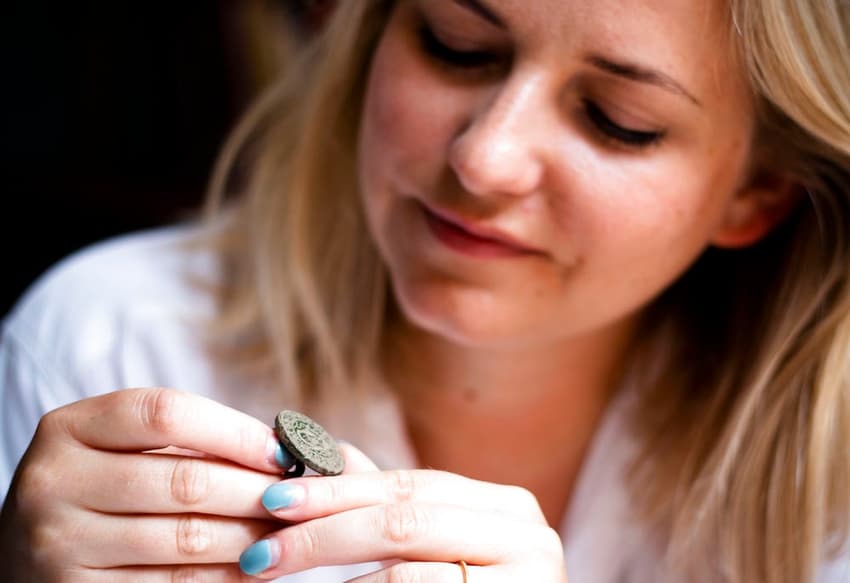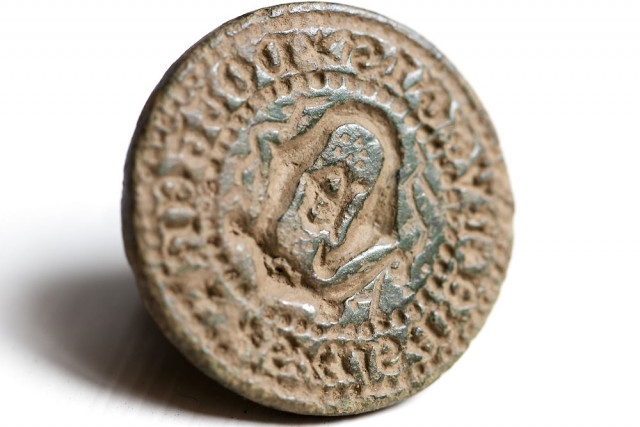Relic found in Denmark belonged to influential 14th-century woman

A recently-discovered seal stamp belonged to a key figure in rebellious movements in Jutland in the 1300s, according to experts.
A seal belonging to Elisabeth Buggesdatter was recently found by an amateur archaeologist at Hodde, near Varde in western Jutland.
The seal was identifiable because Elisabeth is one of few women from the period who is referred to in written sources and other relics.
She is described as having spoken at political gatherings known as tinge (literally, ‘things’), at which legislative and judiciary power was executed during Medieval Denmark – mostly by men.
Elisabeth was the daughter of Niels Bugge, a leading figure and one of the richest men in Jutland during the period, and leader of a Jutish revolt against Danish king Valdemar IV Atterdag, who ruled from 1340 to 1375.
How the seal came to be at the field in Hodde where it was discovered, and any connections between Elisabeth and the area, are currently unknown.
“I sat for ten minutes enjoying the sight of it before sending a picture to the local museum,” Lasse Rahbek Ottesen, the amateur archaeologist who found the seal stamp, said in a statement.

Photo: Arkæologi Vestjylland/handout/Ritzau Scanpix
The relic is considered state property and was therefore handed over to the National Museum in Copenhagen.
Lars Christian Bentsen, curator with Varde Museums’ West Jutland Archaeology, said the discovery was a valuable one.
“It is very preserved and exciting, because seal stamps were normally destroyed when the owner died,” Bentsen said.
That the seal belonged to a woman was confirmed after examination by the National Museum, which found the inscription ‘Elsebe Buggis Dotter’, meaning Elisabeth Buggesdatter, on the stamp.
“It is outstanding to be able to connect this very personal object to a person we know from historical sources,” National Museum curator Marie Laursen said.
“That the owner was a woman who was among the leading figures in society in the 14th century makes this discovery even more spectacular,” she added.
READ ALSO: Archaeologists celebrate spectacular discovery of Danish Iron Age treasure
Comments
See Also
A seal belonging to Elisabeth Buggesdatter was recently found by an amateur archaeologist at Hodde, near Varde in western Jutland.
The seal was identifiable because Elisabeth is one of few women from the period who is referred to in written sources and other relics.
She is described as having spoken at political gatherings known as tinge (literally, ‘things’), at which legislative and judiciary power was executed during Medieval Denmark – mostly by men.
Elisabeth was the daughter of Niels Bugge, a leading figure and one of the richest men in Jutland during the period, and leader of a Jutish revolt against Danish king Valdemar IV Atterdag, who ruled from 1340 to 1375.
How the seal came to be at the field in Hodde where it was discovered, and any connections between Elisabeth and the area, are currently unknown.
“I sat for ten minutes enjoying the sight of it before sending a picture to the local museum,” Lasse Rahbek Ottesen, the amateur archaeologist who found the seal stamp, said in a statement.

Photo: Arkæologi Vestjylland/handout/Ritzau Scanpix
The relic is considered state property and was therefore handed over to the National Museum in Copenhagen.
Lars Christian Bentsen, curator with Varde Museums’ West Jutland Archaeology, said the discovery was a valuable one.
“It is very preserved and exciting, because seal stamps were normally destroyed when the owner died,” Bentsen said.
That the seal belonged to a woman was confirmed after examination by the National Museum, which found the inscription ‘Elsebe Buggis Dotter’, meaning Elisabeth Buggesdatter, on the stamp.
“It is outstanding to be able to connect this very personal object to a person we know from historical sources,” National Museum curator Marie Laursen said.
“That the owner was a woman who was among the leading figures in society in the 14th century makes this discovery even more spectacular,” she added.
READ ALSO: Archaeologists celebrate spectacular discovery of Danish Iron Age treasure
Join the conversation in our comments section below. Share your own views and experience and if you have a question or suggestion for our journalists then email us at [email protected].
Please keep comments civil, constructive and on topic – and make sure to read our terms of use before getting involved.
Please log in here to leave a comment.